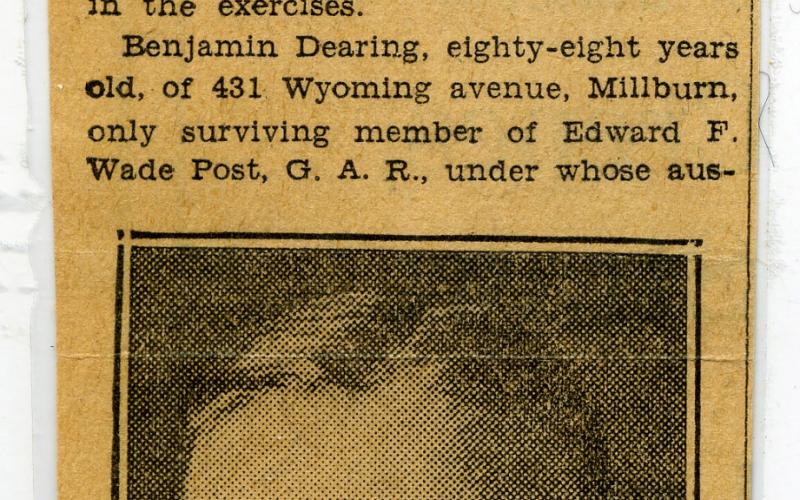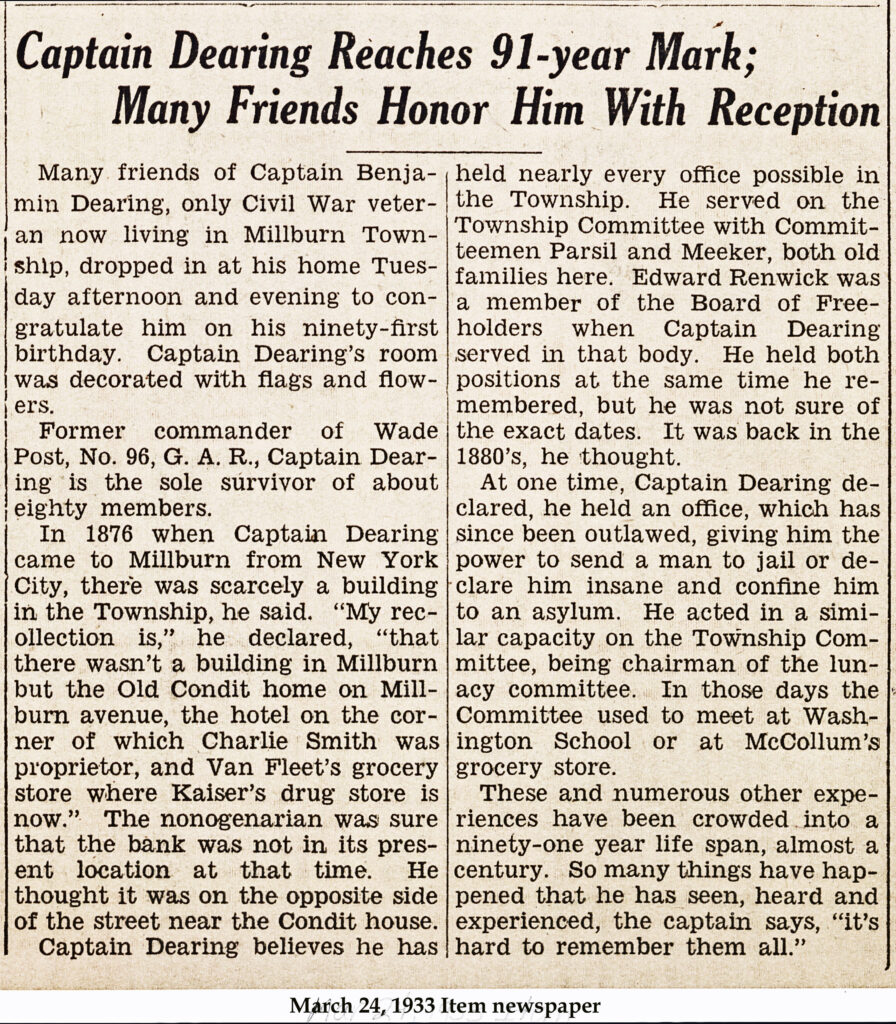
MILLBURN ORAL HISTORY COMMITTEE
SUBJECT: Mrs. Leslie V. Oakes, nee Louise Dearing.
b. February 1885,431 Wyoming Ave., Millburn
to Benjamin Isaac Dearing and Mrs. Dearing
INTERVIEW DATE: April 20, 1977, by telephone
RESIDENCE: 31-A Short Hills Village, Forest Rd., Millburn
INTERVIEWER: Janice Hallett Weisblat
Mrs Oakes said she was not well enough to conduct a taped interview but these

notes are a condensation of a 20 minute talk over the phone. The family moved to Millburn from New York to the house at 431 Wyoming (interviewer’s home), before Mrs. Oakes’ birth. Her father, Benjamin Dearing, bought the house from the original owners, selling perhaps because their little boy had just died. (House built in 1872, one of the six original houses in the Wyoming tract). He paid $500 for the house.
Mrs. Oakes grew up in this house, had an elder brother, 15 years older than she, and left when she married Leslie Oakes in 1907 or 1908. She was a professional singer, sang in St. Paul’s in New York, as well as a tennis champion. She said she played all over the United States, but only played on grass courts twice. It was always clay. When asked where she played locally, she replied, “On the old Roosevelt estate, where there were courts.” This was between Ridgewood Road and Wyoming Ave. The gates at Hickory Drive and Ridgewood in Maplewood were entrance gates. At that time, of course, Wyoming Avenue was a dirt road. She discussed the house and the changes in it, and said that every room but one had had a fireplace. She could remember as a child, lying in her bedroom (first on the right going down the hall) and watching the coal fire in the grate there. She also mentioned the dark hall closet, still downstairs, but now lighted by an electric bulb, and said she was always afraid to go by it. She mentioned a coat rack made of cow horns which her parents kept to the right of the entrance. Much of the house remains the same, structurally, but the last residents (Henry and Ruth Becker) to whom her family sold the house, enlarged the front parlor and added a garage underneath. They also added a shed in the rear which they used as a shop, but which had now been converted to a laundry cum downstairs toilet/washroom. The basement was originally dirt and has now been cemented over. The other change I know of is that wide board pine floors were installed over the old parquet in the three front rooms downstairs.

We also discussed the Wyoming Church. Mrs. Oakes remembered as a youngster that someone had an organ and carried it to the station every Sunday, then known as Wyoming Station, where services were first held. The first building to be erected on the corner of Wyoming and Linden was an old wooden church of which the congregation was very proud. Millburn was at that time known as Rum Creek. It was a manufacturing town, and Mrs. Oakes said that her father always carried a lantern and usually a revolver when he went downtown.